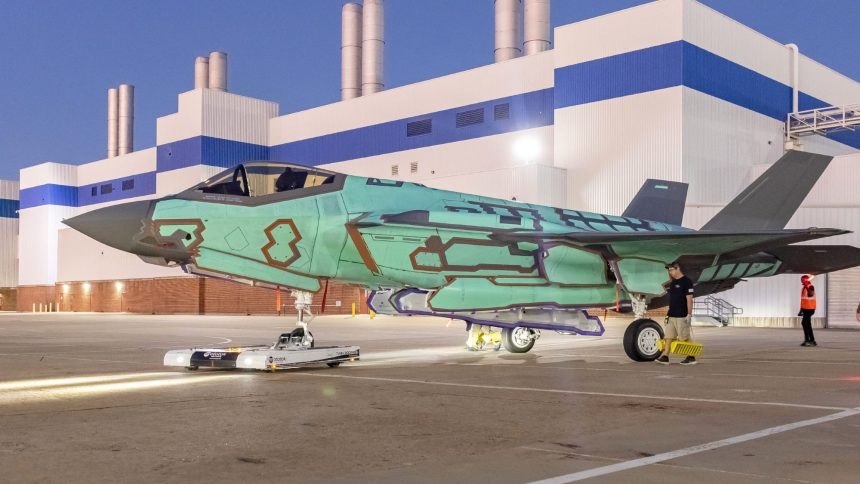In the ever-evolving landscape of global security, the strength and technological superiority of a nation’s naval forces remain paramount. The United States Navy, a vanguard of maritime power, is on the cusp of welcoming a formidable new addition to its ranks: the USS Utah (SSN-801), a Virginia-class attack submarine. This vessel isn’t just another submarine; it represents the cutting edge of underwater warfare, a silent hunter designed to project power, gather intelligence, and maintain peace across the world’s oceans. As the USS Utah gears up for its pivotal sea trials, the anticipation within defense circles and among naval enthusiasts is palpable. These trials are more than just routine checks; they are the ultimate test, the final hurdle before this sophisticated war machine can officially join the fleet and begin its critical missions.
A Legacy of Innovation: The Virginia-Class Advantage
The Virginia-class submarines are not merely successors to previous generations; they are a revolutionary leap forward in submarine design and capability. Conceived in the post-Cold War era, they were engineered to address a broader spectrum of threats and operational requirements than their predecessors. Unlike the larger, purely deep-ocean focused Los Angeles-class, the Virginia-class boasts enhanced littoral (near-shore) capabilities, making them incredibly versatile for both open-ocean and coastal operations. Their design emphasizes stealth, advanced sensor technology, and significant firepower, all while being more cost-effective to build and maintain than the behemoth Seawolf-class.
The USS Utah, as a Block V submarine, incorporates even further refinements and upgrades, building upon the already impressive foundation of its class. These enhancements often include improvements in acoustic superiority, combat systems integration, and the potential for increased payload capacity. Each new block brings with it lessons learned from operational experience and the continuous march of technological progress, ensuring that every Virginia-class submarine is a step ahead.
The Crucible of the Sea: What Sea Trials Entail
For a vessel as complex and vital as a nuclear-powered attack submarine, sea trials are an exhaustive and critical phase. They represent the culmination of years of design, construction, and rigorous shoreside testing. Imagine pushing a finely tuned instrument, built from millions of individual components, to its absolute limits in the harshest environment on Earth – the ocean.
These trials are typically divided into several key stages, each designed to thoroughly evaluate every system onboard:
- Builder’s Trials: Conducted by the shipbuilder, often with Navy personnel observing, these initial trials focus on fundamental operations. This includes basic propulsion, steering, navigation, and emergency systems. It’s about ensuring the submarine can move safely and predictably under its own power.
- Alpha Sea Trials: Here, the Navy takes a more active role. Alpha trials delve deeper into the performance envelope, testing submerged operations, diving planes, ballast tanks, and more complex maneuvers. This is where the vessel’s hydrodynamics and stability are truly put to the test.
- Bravo Sea Trials: This phase often involves higher speeds, deeper dives (though not necessarily to maximum depth), and extensive testing of the combat systems. Weapons systems, sonar arrays, communications equipment, and the integrated battle management system are all exercised to ensure they function flawlessly.
- Acceptance Trials: These are the final, comprehensive trials before formal delivery to the Navy. A Board of Inspection and Survey (INSURV) team typically conducts these, rigorously evaluating every system, from the nuclear reactor plant to the galley equipment. Any deficiencies found must be rectified before the Navy officially accepts the ship.
For the USS Utah, passing these key sea trials means demonstrating that its cutting-edge reactor operates safely and efficiently, its propulsion system delivers maximum power and stealth, its advanced sonar can detect the faintest whispers in the water, and its sophisticated weapons can be deployed with precision. It means proving that hundreds of miles of cabling, thousands of valves, and countless interconnected systems work in perfect harmony under immense pressure.
Beyond the Technical: A Home for Heroes
While the technical specifications of a submarine are undeniably impressive, it’s crucial to remember that these vessels are operated by highly skilled and dedicated men and women. The submarine service is a unique brotherhood (and increasingly, sisterhood) that demands exceptional professionalism, resilience, and a profound commitment to duty. Life aboard a submarine is challenging – living in close quarters for extended periods, far from natural light, and with the constant awareness of the immense pressures outside the hull.
The successful completion of sea trials also signifies that the living spaces, the environmental control systems, and the overall habitability are up to standard for the crews who will call the USS Utah home for months at a time. It’s about ensuring that the human element, as critical as any piece of hardware, is well-supported.
Strategic Implications: Reinforcing Global Security
The integration of the USS Utah into the U.S. Navy’s fleet has significant strategic implications. Attack submarines are often referred to as the “ultimate covert weapon” due to their ability to operate undetected for long periods. They perform a variety of critical missions, including:
- Anti-Submarine Warfare (ASW): Hunting and neutralizing adversary submarines.
- Anti-Surface Warfare (ASuW): Engaging and sinking enemy surface ships.
- Intelligence, Surveillance, and Reconnaissance (ISR): Gathering vital information about potential adversaries.
- Special Operations Force (SOF) Delivery: Covertly inserting and extracting special forces.
- Mine Warfare: Laying or clearing sea mines.
- Strike Operations: Launching Tomahawk cruise missiles against land targets.
The addition of another highly capable Virginia-class submarine like the USS Utah enhances the Navy’s capacity to perform these missions across multiple theaters simultaneously. In an increasingly complex geopolitical landscape, the silent deterrence and proactive capabilities offered by these submarines are indispensable for maintaining stability and protecting national interests. It sends a clear message of strength and resolve, underpinning diplomatic efforts and ensuring freedom of navigation across the globe.
Looking Ahead: A New Chapter Begins
Once the USS Utah successfully navigates its sea trials, it will undergo a final outfitting period and then formally commission into service. This momentous occasion will mark the beginning of its operational life, where it will join its sister ships in safeguarding American interests and contributing to global security. The journey from blueprint to operational readiness is long and arduous, but for the USS Utah, the finish line is firmly in sight. The world’s oceans are vast, and the challenges they present are constant, but with vessels like the USS Utah, the U.S. Navy stands ready.



